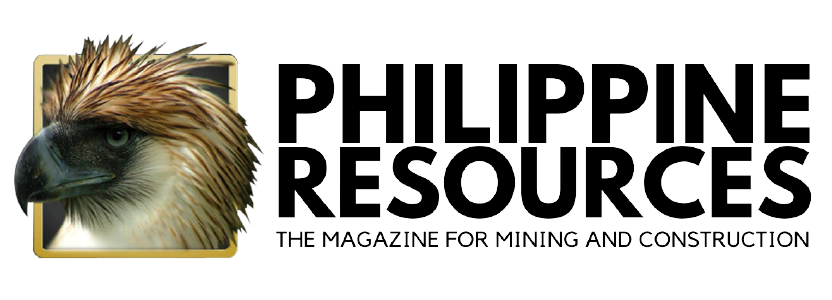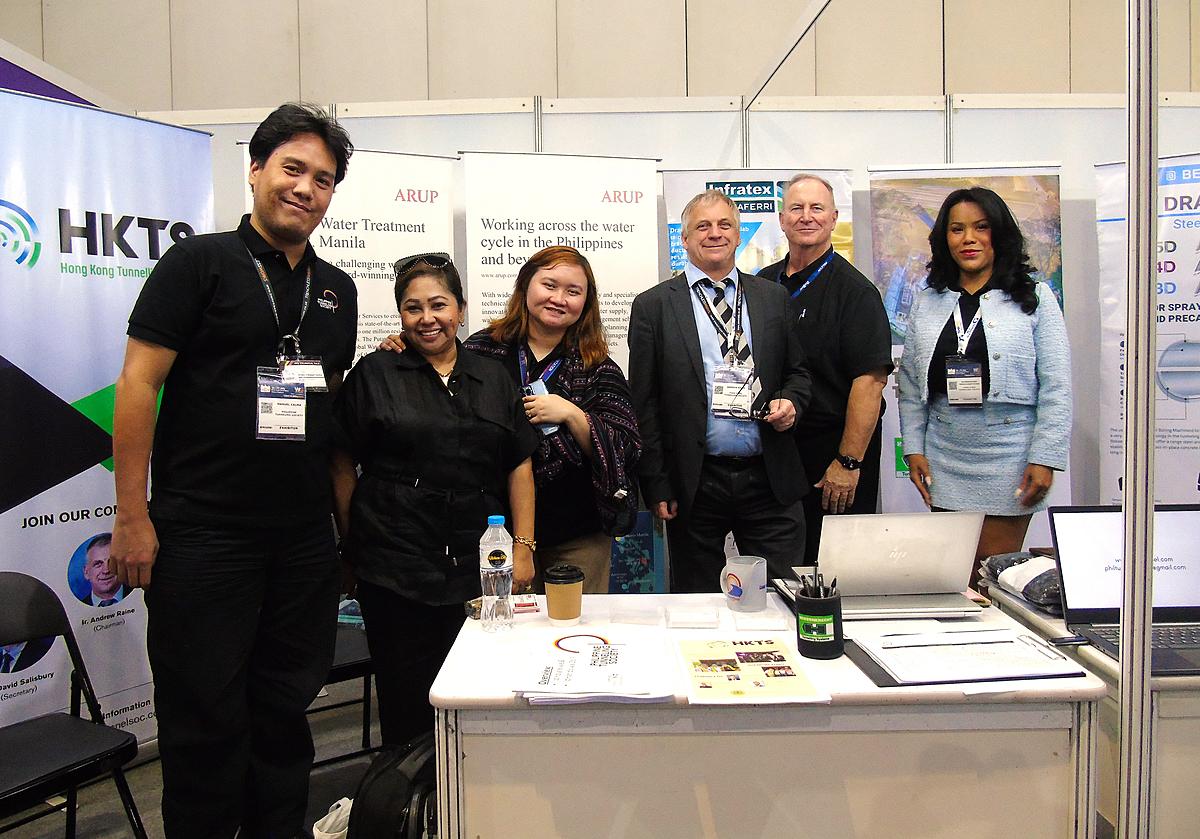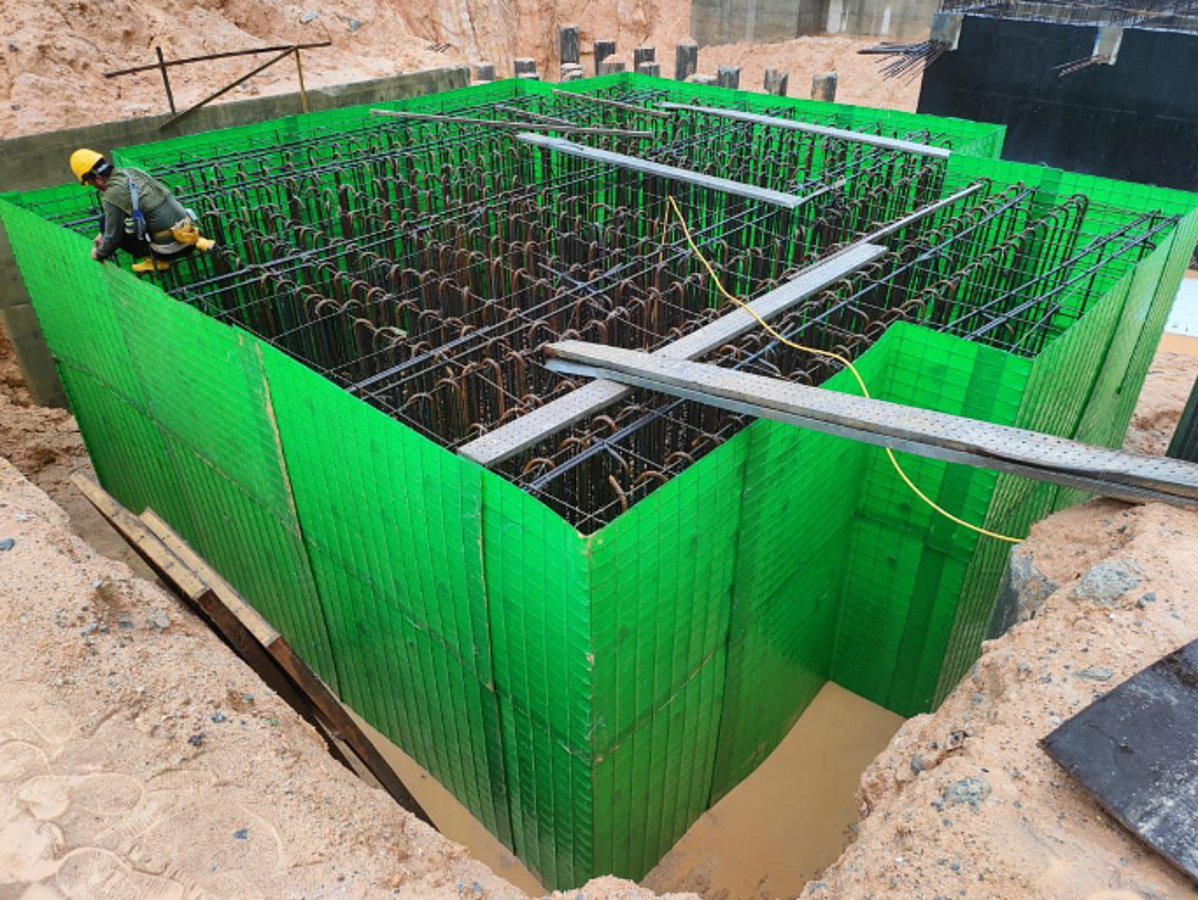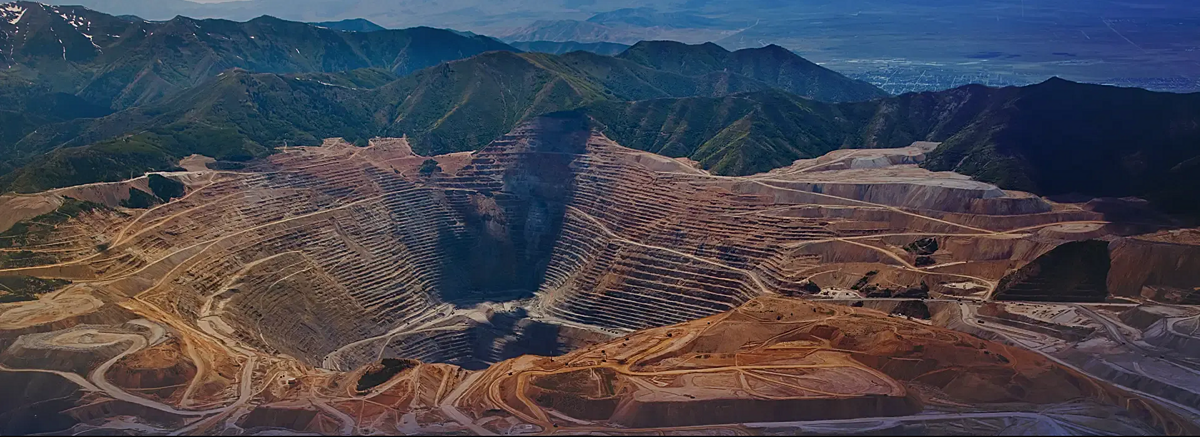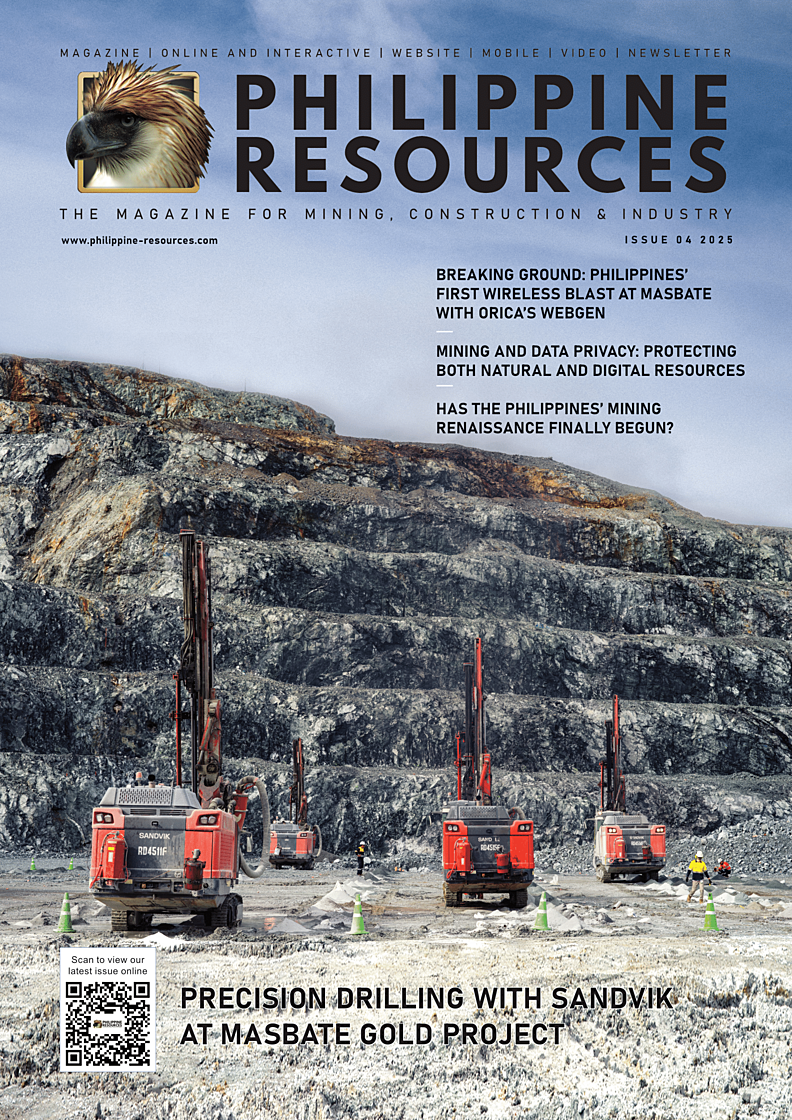Acknowledging the critical role of technology in infrastructure development, the 5th Philippine Roads, Bridges, and Tunnels Summit brought together top construction firms, contractors, investors, government representatives, and leading technology providers in two days of insightful sharing of expertise and views.
The Summit was held on August 27-28, 2025 at City of Dreams Manila Hotel, Philippines.
The event was made possible by Mykar Events Consultancy, an international business facilitator specializing in empowering businesses and economies across Asia and emerging markets via targeted research, collaborative conferences, active community development, and insightful publishing.
Focusing on resilience and smart infrastructure development, the summit featured many notable speakers. Among them were:
-- Kenneth Kwok (East Asia Water Leader of ARUP) for Keynote Presentation "Engineering for Resilience: Integrated Flood Management Strategies for Roads, Bridges, and Tunnels"
-- Engr. Bernie Peralta (Engineering Manager, China Road and Bridge Corporation) on "QUALITY vs. SPEED: Ensuring Safety Amid Fast – Tracked Projects"
-- Jewerly C. Adique (Transportation Dev. Officer, LTO) who presented "Connected Roads, Safe Journeys: LTO’s Innovations for Smart Infrastructure"
-- Engr. Jirah Realo (Bridge and Civil Engineer, Aurecon) who reported "Maximizing Infrastructure Lifespan: Smart Asset Management Strategies for Bridges and Culverts", and other speakers.
The event was emceed by Mr. Ian Lim, General Manager of Mykar Events Inc.
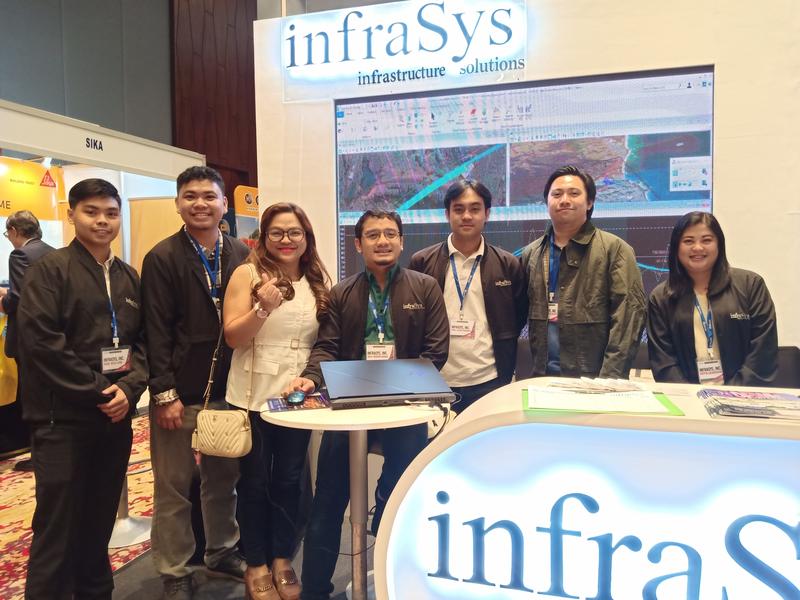
As the Philippines accelerates its infrastructure development, the challenge is no longer just about merely building, but the emphasis is on building sustainably.
This was discussed during a panel discussion with the topic “Building Bridges, Sustaining Futures: Innovations and Challenges in Sustainable Infrastructure in the Philippines.”
This panel explored the innovations, challenges, and opportunities that will define the future of roads, bridges, and tunnels in the country, ensuring they are designed not only for efficiency but also for environmental and social resilience.
The discussion was moderated by Engr. Virgilio “Vergel” Cabato Jr. from the Society of Construction Law Philippines. The panelists were Larry Pastrana (President, SMEC Philippines) and Khalid Saleem (Southeast Asia Roads & Streets Business Leader, ARUP).
Climate resilience is reshaping infrastructure planning and design. Thus the event asked, “What are the strategies in achieving climate resilience in the design of road, bridge, and tunnel development?”
The urgent need to address climate challenges and the demand for resilient and future-ready infrastructure were the main focus of discussion in a panel discussion titled “Building Climate-Resilient Infrastructure: Roads, Bridges, and Tunnels for the Future.”
This panel was moderated by Engr. Francis Domingo from DCCD Engineering Corporation. Panelists were Kenneth Kwok (East Asia Water Leader, ARUP), Johan Martinez (Director, PwC Philippines) and Viktor Rey L. Apuzen (Head of Project Development, NLEX Corporation - Metro Pacific Tollways).
The panel conversed about engineering policies and private sector collaboration that can ensure that our roads, bridges, and tunnels are designed to withstand the impacts of a changing climate. These organizations are committed in safeguarding connectivity and communities for generations to come.
Flood Control Studies by Arup
The Director & East Asia Water Business Leader of Arup, Kenneth Kwok, gave a keynote presentation that provided some vital insights on how his company has been deploying flood control strategies and infrastructure in Hong Kong.
His report "Engineering for Resilience: Integrated Flood Management Strategies for Roads, Bridges, and Tunnels" documents Arup's Flood Management Projects that delivers flood-resilient solutions for infrastructure in Asia.
Kwok, a chartered civil engineer with 27 years in Arup, worked on flood management projects around water cycle in East Asia.
Arup (or Arup Group Limited) is a British multinational professional services firm specializing in design, engineering, architecture, planning, and advisory services. Arup has been active in APAC for over 50 years, with multiple ADB infrastructure projects in the Philippines.
Arup is the company behind the Infrastructure Preparation and Innovation Facility Output 1 for Roads and Bridges for the Northern Luzon Expressway Tunnel, Laguna Lakeshore Road Network, Sorsogon-Samar Link, Samal Island-Davao City Connector Bridge, Bataan-Cavite Interlink Bridge and more.
Additionally, they are also involved in the Infrastructure Preparation and Innovation Facility Output 3 for Rail, such as the North-South Commuter Railway, EDSA Greenways, Cebu Baseport, Metro Manila Subway, and Davao High Priority Bus System.
In his discussion about Existing Flood Management Practice, Kwok enumerated some flood control pain points in current practices in Asia, in relation to factors like climate, operation, design and finance.
-- Climate Projection and Scenarios – Failure happens when there is inadequate assessment of multiple climate hazards where location-specific climate projection is considered.
-- Operation, Design & Finance – Problems arise when there are outdated infrastructure standards that fail to incorporate future climate demands, insufficient consideration for design 'exceedance' events, and physical damages and financial loss are not properly quantified.
An interesting part of his lecture is about the “Integrated Flood Management Approach” or the Typical Model for Risk Reduction. These involves reduction of flood hazard, flood protection, land use regulation, raising preparedness, and residual risk mitigation.
This flood management approach combines structural measures (e.g. drainage system and embankments) with non-structural measures (e.g. land use planning, early warning systems, and community engagement). This management approach is essential to incorporate effects of climate change and extreme weather events into planning and design to ensure long-term resilience and sustainability.
On his final remarks, he emphasized the Interdependence of various infrastructure systems wherein the failure in one system will negatively affect the others. What are the different infrastructure systems?
These are: Emergency services, healthcare and public health, citizens, communications and IT, electricity, financial services, storm water system, drinking water, wastewater, main roads and tunnels, railroad, airport, port and fuel storage, industrial facilities, and commercial facilities.
Each one has an impact in our lives and each one works in synergy with the others. The balance between each system is fragile and needs to be protected through smart planning and design.
The Importance of Fast-Tracked Projects
China Road and Bridge Corporation's Engineering Manager, Engr. Bernie Peralta, gave a presentation titled "Quality vs. Speed: Ensuring Safety Amid Fast-Tracked Projects”.
On one part of his presentation, “Balancing Quality, Speed and Safety in Fast-Tracked Bridge Construction”, he discussed the strategic framework for efficient, safe, and durable infrastructure.
Why is there a need to work at a fast pace? Firstly, he said that we are an archipelagic nation the needs to connect the 7,641 islands. Second reason is economic growth, where quality infrastructure enables commerce and supply chains. Third reason is social impact. Once proper infrastructure is put into place quickly, basic needs are more accessible to all, and there is a reduction in travel time. Time is money. When time is spent wisely and not wasted on traffic or unnecessary distance, we have a better chance of achieving economic progress. Lastly, there is climate resilience. With proper infrastructure available quickly, we are prepared in case of typhoon and seismic events.
“The public demands speed. Our duty demands quality and safety,” he said.
While infrastructure projects are being deployed, there is an interplay of the three (3) priorities namely: quality, safety, and speed. This interplay stresses the need to address urgent infrastructure requirements without compromise.
“Fast-tracked bridge construction accelerates timelines to meet urgent needs, driven by economic pressures, disaster recovery, and urban expansion. This approach ensures public safety, structural longevity, and cost effectiveness. The core challenge lies in achieving speed without sacrificing quality or safety.”
Peralta mentioned the “Engineer's Dilemma” where "Cheap" is not an option. He said that an engineer must deliver all three priorities—quality, safety, and speed. Sacrificing one jeopardizes the entire project. He outlined this theory in this manner:
-- Poor Quality results in failure and rework.
-- Poor Safety results in tragedy and stoppages.
-- Poor Speed causes delays and lost value.
Moreover, he pointed out that safety is their non-negotiable core, namely:
Worker safety – Their company adherence to OSHA and local regulations, comprehensive training programs, and mandatory protective equipment ensure a safe working environment.
Public safety -- Long-term structural reliability prevents accidents, requiring meticulous attention to design, construction, and ongoing inspection protocols.
Data & Accountability -- Analyzing construction accident rates and bridge failure data (2020-2024) drives continuous improvement in safety protocols and practices.
On a closing note, Peralta mentioned that using prefabricated parts and materials in building bridges has many benefits.
For example, prefabricated decks, piers, and abutments that were built off-site under controlled conditions are long-lasting and durable for years. The advantages of using prefabricated parts are speed, quality, and safety. Through this building technique, the interplay among the three priorities will be achieved.
Speed is attained since site prep and fabrication happens simultaneously. Quality is ensured due to factory-level precision and curing of materials. And lastly, safety is achieved because workers will spend less time in hazardous site conditions. Overall, using prefabricated materials and parts will potentially result in the completion of a project ahead of schedule, but at the same time, quality and performance are assured.
Join us next year for another Philippine Roads, Bridges and Tunnels Summit by Mykar Events Consultancy.
---
Photo credit: Marcelle P. Villegas
